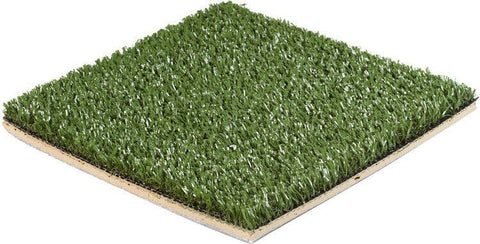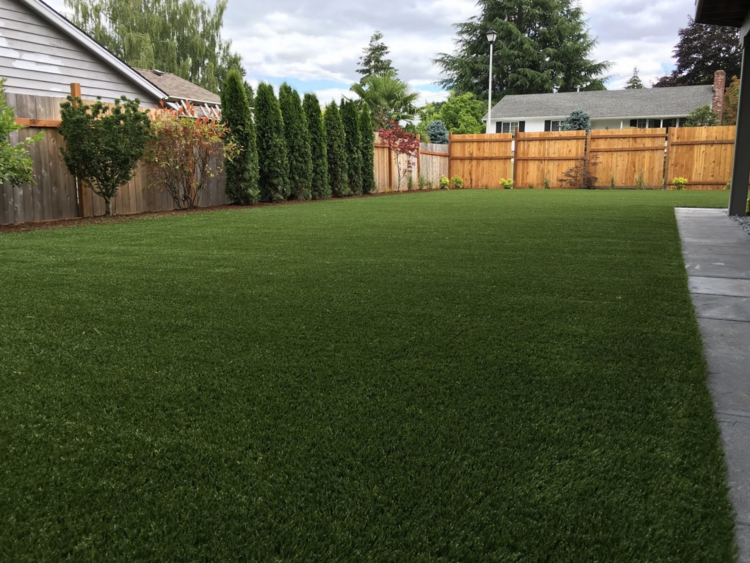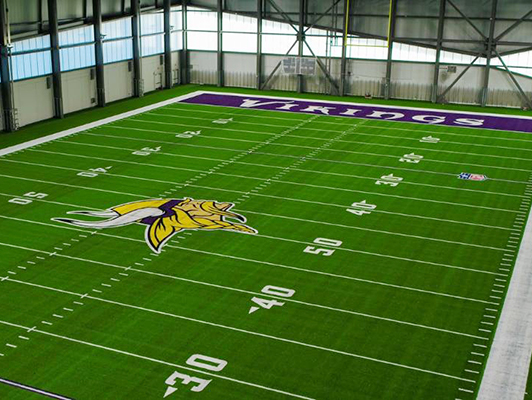Look Into the Environmental Conveniences of Opting for Artificial Turf Solutions
The adoption of man-made lawn options presents a compelling chance to resolve pressing environmental challenges. By substantially lowering water use and minimizing the application of dangerous chemicals, these choices not just advertise sustainable landscape design yet additionally protect local ecosystems.
Water Conservation Advantages
One of the most substantial benefits of fabricated lawn is its capacity to conserve water. Conventional turf lawns require significant irrigation, particularly in areas prone to dry spell or water restrictions. On the other hand, synthetic turf does not need watering, significantly minimizing the general demand for water resources. This attribute is particularly useful in arid regions where water deficiency is a pushing worry.
By eliminating the requirement for routine watering, synthetic lawn contributes to sustainable landscape practices and aids reduce the ecological effect of too much water consumption. The preservation of water extends to the reduction of drainage, which can lead to soil erosion and waterway air pollution.
Furthermore, the installation of man-made lawn allows towns and house owners to assign water resources more successfully, concentrating on important usages such as alcohol consumption water and agriculture. The change in the direction of synthetic grass not just promotes accountable water usage however likewise aligns with wider ecological objectives focused on maintaining natural deposits.
As areas significantly focus on sustainability, the water conservation advantages of man-made lawn offer an engaging case for its adoption in industrial and domestic landscape design tasks.
Reduced Chemical Usage
The transition to synthetic grass significantly decreases the dependence on chemical therapies frequently utilized in natural turf upkeep. Traditional turf monitoring generally involves the application of fertilizers, pesticides, and herbicides to promote development and control parasites. These chemicals can present dangers to human health, local wildlife, and the setting, adding to dirt and water contamination.
In contrast, synthetic grass removes the requirement for these harmful materials. When set up, it requires very little upkeep, primarily including routine cleansing and occasional infill replenishment. This decrease in chemical usage not only profits the prompt atmosphere but additionally contributes to broader ecological stability. By lessening the release of artificial compounds right into the environment, synthetic grass promotes much healthier soil and water systems.
In addition, the absence of chemical drainage connected with fabricated turf setups aids shield local waterways from air pollution, sustaining aquatic life and keeping biodiversity. Phoenix turf companies. As communities progressively focus on lasting practices, choosing for fabricated turf presents a feasible remedy that aligns with environmental conservation objectives. Through this shift, residential or commercial property owners can take pleasure in rich green spaces without compromising environmental health and wellness, leading the means for an extra lasting future
Reduced Carbon Impact

Moreover, the installation of synthetic grass can lead to substantial water preservation. Natural yards require significant amounts of water for irrigation, which not only contributes to the carbon impact connected with water removal and treatment but also pressures neighborhood water resources. On the other hand, synthetic grass needs very little upkeep, calling for no watering, thus dramatically lowering water usage and its connected energy costs.
Additionally, the longevity of synthetic grass adds to its reduced carbon impact. With a life expectancy of approximately 15 years or more, go to my site the demand for constant substitutes is decreased, resulting in less waste and reduced power intake in manufacturing and taking care of conventional yard options. Generally, fabricated turf provides a lasting choice for eco mindful landscape design.
Habitat Conservation
Habitat preservation is a crucial factor to consider in the debate over landscaping options, especially when contrasting synthetic grass to natural yard. Natural turf yards commonly need considerable maintenance, consisting of making use of herbicides, fertilizers, and chemicals, which can detrimentally impact local communities. These chemicals can leach into the dirt and waterways, harming indigenous plants and fauna and disrupting local environments.
On the other hand, synthetic grass presents a possibility to decrease the environmental impact of landscaping. By choosing artificial turf, house owners can lessen the interruption of natural habitats connected with standard lawn care methods. Synthetic grass eliminates the need for damaging chemicals, thereby securing neighboring wild animals and maintaining the stability of surrounding ecological communities. The installation of synthetic turf can lead to the conversion of former yard areas right into even more biodiverse landscapes, such as pollinator gardens or native plant locations, which can support local wildlife.
Ultimately, the change to synthetic grass not just preserves water and minimizes Recommended Reading maintenance initiatives but also cultivates a much more harmonious partnership in between human tasks and the native environment, advertising habitat preservation at the same time.
Long-Term Sustainability
Lasting sustainability is an important aspect in examining the benefits of synthetic grass over standard lawn yards. One of one of the most significant advantages of artificial grass is its longevity; it can last up to 15-20 years with very little upkeep, whereas natural turf needs constant reseeding and substitute. This longevity decreases the requirement for constant sources, such as water, plant foods, and pesticides, which are important for maintaining a healthy yard yard.
Additionally, synthetic grass adds to a decrease in carbon emissions connected with grass treatment devices. Standard yards usually require gas-powered lawn mowers, leaners, and blowers, all of which add to air contamination. Arizona turf. In comparison, fabricated turf removes the requirement for such tools, promoting a cleaner setting
Furthermore, the manufacturing of man-made turf significantly makes use of recycled products, enhancing its sustainability account. As makers take on green methods, the environmental impact of synthetic grass continues to lessen.

Final Thought
The fostering of fabricated lawn remedies offers considerable environmental benefits, including considerable water conservation, minimized dependence on unsafe chemicals, and a reduced carbon footprint. Man-made turf aids in preserving natural environments by reducing land disruption and promoting long-lasting sustainability with the use of resilient materials. Jointly, these elements underscore the possibility of synthetic lawn to add positively to ecological health and wellness and supply a practical option to traditional landscaping practices in an increasingly resource-conscious world.
In contrast, fabricated lawn does top article not need watering, significantly minimizing the total need for water resources. By reducing the launch of synthetic substances right into the community, man-made lawn advertises much healthier dirt and water systems.
Furthermore, the installation of synthetic turf can result in considerable water preservation. In comparison, man-made lawn requires very little upkeep, calling for no watering, therefore significantly decreasing water usage and its associated energy costs.
